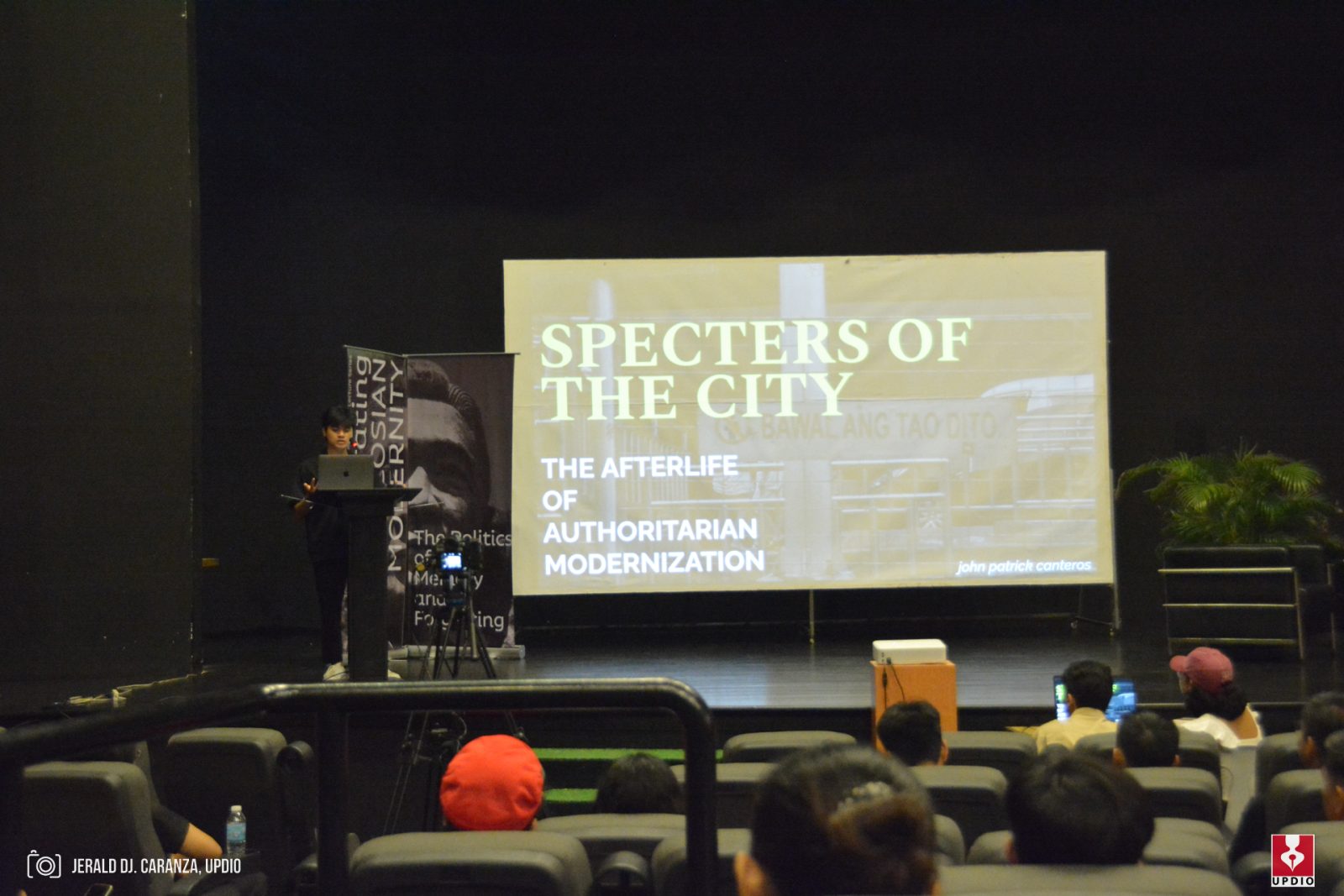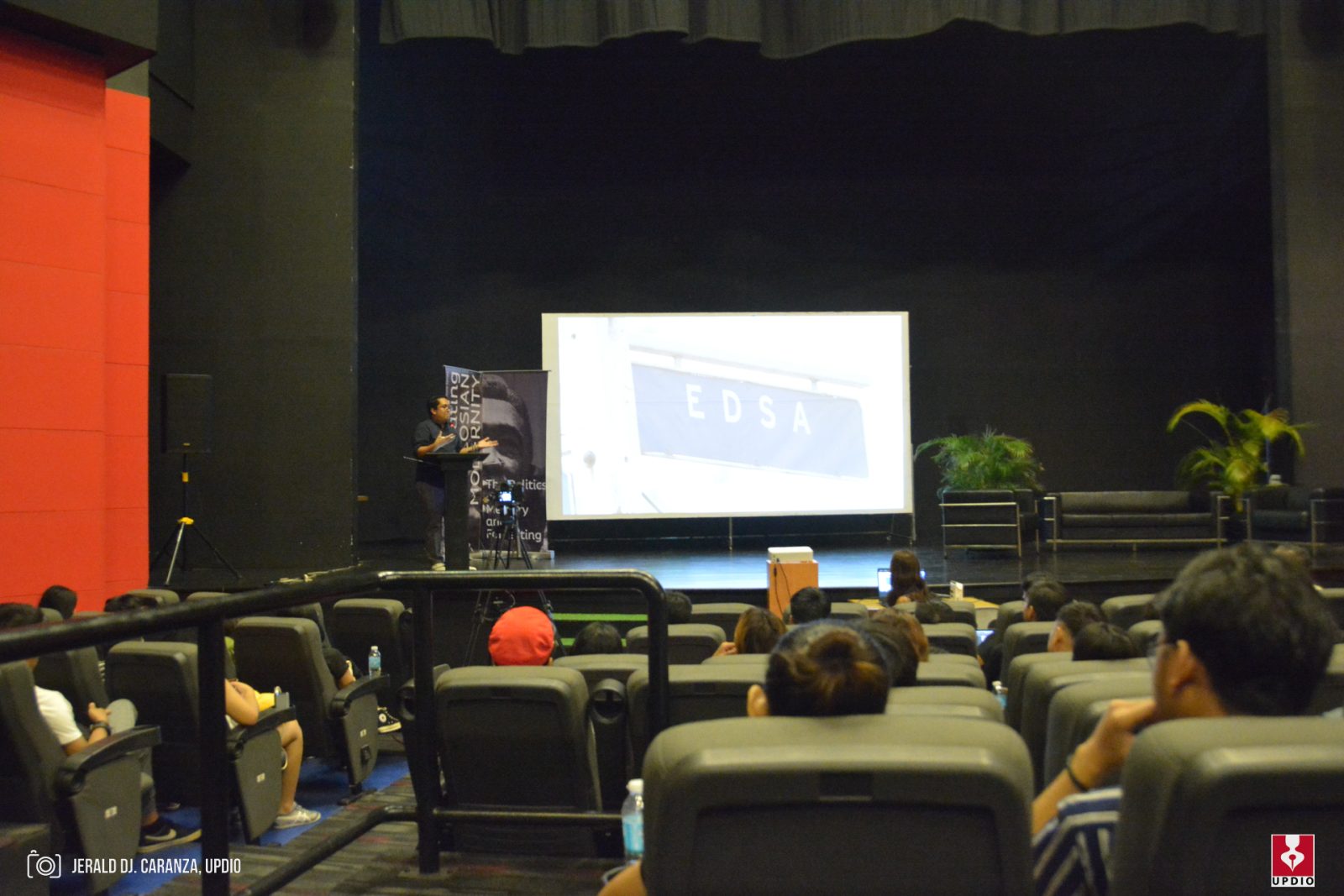The first History, Theory, and Criticism (HTC) lecture series was recently launched by the UP Diliman (UPD) College of Architecture (CA) and featured a two-part lecture on urbanism during the administration of former President Ferdinand E. Marcos and the memorials built in honor of the EDSA Revolution that ended it.
Recuperating Marcosian Nostalgia: The Politics of Memory and Forgetting (Recuperating Marcosian Nostalgia) featured the research Specters of the City: The Afterlife of Marcos-Era State Urbanism by John Patrick Canteros and Monumentalizing Uprising: An Introspection of Collective Memory through the Built Memorials and Shrines of EDSA People Power by Bernard Joy Dones.
The International Experts for Research Enrichment and Knowledge Exchange defines urbanism as “the study of how population of urban areas, such as towns and cities, interact with the built environment,” such as buildings and roads.
Canteros, a Fulbright scholar, and Dones, an instructor at the Polytechnic University of the Philippines and the Technological Institute of the Philippines, are both under the mentorship of Gerard Rey A. Lico, PhD, a professor at the CA and director of the CA Research Office.

According to the CA, the two speakers “shed light on thought-provoking topics that resonate with the contemporary socio-political landscape.”
Canteros spoke about the popularity of nostalgia during the Marcos era, specifically construction projects like the San Juanico bridge, the Film Center of the Philippines, and the buildings in the Cultural Center of the Philippines complex.
“I explore the use of ‘spectacle,’ particularly its ability to structure a political economy and consolidate state power, to understand how old representations of long-abandoned buildings and ‘pipedream’ projects continue to influence a desire for modernity and shape the politics that entails. Unlike the massive construction projects of the past, however, I suggest that the reproduction of these images possesses a ‘hauntological’ potency where reality is no longer a limiting factor. Instead, memory becomes an inconvenience, and the promise of a future becomes more real than the present,” Canteros said.
Dones’s research, on the other hand, examined existing EDSA Revolution monuments and their importance in “safeguarding historical narratives” and the effect time and polarization have had on their meaning.
“[T]he study also reveals that limited rituals and the underutilization of the surroundings of these monuments for educational purposes create vulnerable gaps in memory, exposing them to potential distortions if not activated through placemaking,” Dones said.

Recuperating Marcosian Nostalgia included a panel discussion with Carmen Bettina Silong-Bulaong and Lorelei de Viana, PhD, an assistant professor and professorial lecturer of the CA, respectively, and Raul C. Navarro, PhD, a professor at the UPD College of Music.
The two-part lecture was a collaboration between the CA Research and Extension (REx) Office and HTC Studio Laboratory. It was held on April 26 at the Benito Siy Pow Auditorium.
